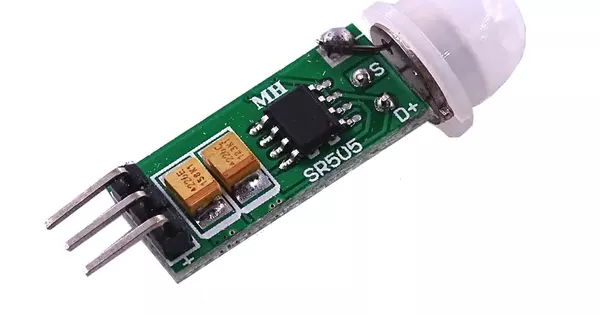An infrared detector is a detector that responds to infrared (IR) radiation. The two main types of detectors are thermal and photonic (photodetectors). Many temperature-dependent phenomena can be used to track the thermal effects of incident IR radiation. Bolometers and microbolometers are based on changes in resistance. The thermoelectric effect is employed by thermocouples and thermopiles. Thermal expansion is followed by golay cells. Pyroelectric detectors are the most commonly used in IR spectrometers.
Infrared (IR) detectors must be extremely miniaturized in order to be integrated into next-generation consumer electronics, wearables, and ultra-small satellites. IR detectors, on the other hand, have traditionally relied on bulky (and expensive) materials and technologies. According to Nature Photonics, a team of scientists led by Empa researcher Ivan Shorubalko has developed a cost-effective miniaturization process for IR spectrometers based on a quantum dot photodetector that can be integrated on a single chip.
The monolithic integration of subwavelength IR photodetectors has a tremendous effect on the scaling of Fourier-transform waveguide spectrometers. However, this may also be of great interest for miniaturized Raman spectrometers, biosensors, and lab-on-a-chip devices, as well as the development of high-resolution snapshot hyperspectral cameras.
Ivan Shorubalko
The miniaturization of infrared spectrometers will lead to their increased use in consumer electronics, such as smartphones for food control, hazardous chemical detection, air pollution monitoring, and wearable electronics. They can be used to detect specific chemicals quickly and easily without the need for laboratory equipment. Furthermore, they can be used to detect counterfeit medical drugs as well as greenhouse gases such as methane and CO2.
A team of scientists at Empa, ETH Zurich, EPFL, the University of Salamanca, Spain, the European Space Agency (ESA), and the University of Basel now built a proof-of-concept miniaturized Fourier-transform waveguide spectrometer that incorporates a subwavelength photodetector as a light sensor, consisting of colloidal mercury telluride quantum dot (Hg Te) and compatible with complementary metal-oxide-semiconductor (CMOS) technology, as they report in the recent issue of Nature Photonics.

Here describes a novel near-zero power infrared sensor for remote human presence detection in border security and perimeter monitoring applications that does not require maintenance. The fundamental difference between this technology and existing solutions is that, rather than relying on continuous electricity use to operate, our sensor is off-but-always-alert – it does not draw any power from the battery to perform the sensing function, but instead uses the energy in the infrared radiation emitted by a human body itself. This significantly extends the sensor’s battery life, removing the need for frequent battery replacement and associated maintenance costs.
Tremendous effects on spectrometers of different kinds and in various fields
The resulting spectrometer exhibits a large spectral bandwidth and moderate spectral resolution of 50 cm−1 at a total active spectrometer volume below 100 μm × 100 μm × 100 μm. This ultra-compact spectrometer design allows the integration of optical-analytical measurement instruments into consumer electronics and space devices.
“The monolithic integration of subwavelength IR photodetectors has a tremendous effect on the scaling of Fourier-transform waveguide spectrometers,” says Empa researcher Ivan Shorubalko. “However, this may also be of great interest for miniaturized Raman spectrometers, biosensors, and lab-on-a-chip devices, as well as the development of high-resolution snapshot hyperspectral cameras.”
















